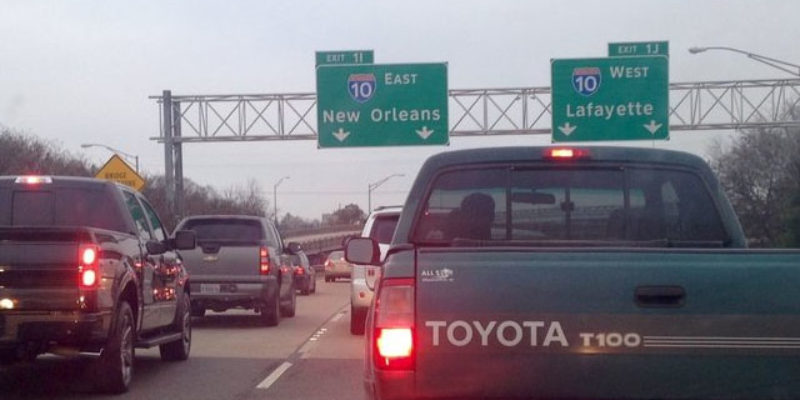Louisiana’s Secretary of Transportation and Development Shawn Wilson has it right: don’t expect the Legislature to raise the gasoline tax at the pump this year. Because nothing it or Wilson have done changes the fact that no increase is needed.
Wilson says, correctly, that political factors intervene. With 2019 an election year, legislators typically loathe tax hikes right before facing voters, He even figured out that the constitutional amendment some years ago that allowed the Legislature to take up tax matters in regular session only in odd-numbered years, requiring special sessions in even-numbered years, purposely discourages increasing any taxes at all.
Still, in 2015 lawmakers increased taxes by altering some business credits plus adding to taxation of tobacco, so it’s not impossible. Then, the state had an operating budget deficit to overcome. Now, in regards to roads, it has a huge backlog (Wilson says $14.3 billion worth, five-eighths of that being bridge work) of capital expenditures with which to contend.
That doesn’t quite carry the same urgency. At the same time, the state has undercut the case Wilson has tried to build for the tax increase by its continued spending of taxpayer dollars unnecessarily that otherwise could go to addressing the backlog (the components of which vary widely in actual criticality).
In 2017, Wilson and others made a huge effort to tax motorists by as much as 17 more cents a gallon, proceeds of which flow into the Transportation Trust Fund. However, fewer than one in seven dollars of those dollars then actually went to state roads. Instead, the majority went to DOTD operations, almost as many to multimodal purposes, with the remainder kicked back to parishes or subsidizing a special program known as TIMED to complete select roads and bridges.
Despite that failure to suck in more taxpayer resources, in 2018 spending on roads increased nearly $200 million. About half the increase came from federal funds – which the year before Wilson had lamented the state would miss out on without the hike – and almost all of the rest came from sharply higher bond sales and self-generated revenues.
However, funding outside of state roads barely changed. The state still subsidized expenditures that local governments could make on seaports, airports, vessels to the tune of almost $70 million, hardly fewer than the previous year. It continued millions more that statutorily necessary for local government operations such as in mass transit and motorist aid. It also kept diverting money to pay off the TIMED debt that users of some of those projects could support.
Advertisement
In short, even as Wilson poor-mouthed DOTD’s resources vis-a-vis highway needs to grab extra taxpayer support, his department increased capital outlays by 25 percent and diverted close to $100 million more to purposes either other public entities or private users could finance. And this past fiscal year promises to push the figure even higher, with the state recently approving the issuance of $185 million in bonds over the next two years for high-profile projects in each of the state’s three major metropolitan areas.
That approval with the higher amount already in place reaches at least half of the $510 million more funding envisioned with the desired 2017 gas tax increase – all without any increase. And that doesn’t include the savings the state could realize from having local governments and users pay their own way instead of it.
Additional ways exist to find money beyond the gas tax, which combined with the federal portion accounts for around 90 percent of all state transportation spending. The Pelican Institute has just released a report that emphasizes decreasing money spent on local roads and increasing private-public partnerships to send more resources to state road and bridges, among other ideas.
Although political considerations may dampen chances for any kind of hike in Louisiana’s gas tax this year, the simple fact is none is needed. Greater care in shuffling funds gathered at existing tax levels to actual priorities and more creative approaches that make funding provided more proportionally to actual use can reduce the state’s road woes.
Advertisement
Advertisement

